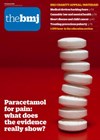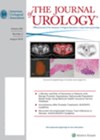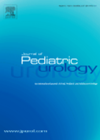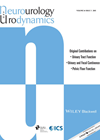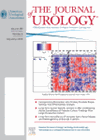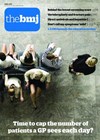
Journal Reviews
Advanced prostate cancer and chemotherapy
The treatment pathway for advanced prostate cancer is both puzzling and complex and varies from centre to centre in the UK. The National Prostate Cancer Audit Report 2019 for England and Wales shows that only a quarter of men with...
Prenatal spina bifida repair – does it have urological benefits in the longer term?
At present, I have one patient under my care who underwent prenatal closure of his spina bifida defect. Only with time, will we be able to determine whether this intervention has been of benefit for him from a urological standpoint....
What should we do with the incidentally detected renal cyst in a child?
The introduction of routine prenatal screening in the early 1980s resulted in paediatric urologists being confronted with the dilemma of what to do with antenatally-detected urinary tract dilatation, many of whom, we now know, do not require long-term surveillance or...
Guideline of guidelines – testosterone therapy for testosterone deficiency
The authors conducted an internet search and analysed guidelines for testosterone therapy (TTh) produced by the American Urological Association (AUA), European Association of Urology (EAU), American Association of Clinical Endocrinologists (AACE), British Society of Sexual Medicine (BSSM), Endocrine Society (ES),...
Non-urothelial tumours of bladder – impact on oncological outcomes
Non-urothelial bladder tumours are not very common and they are generally considered to be high risk tumours when compared to standard urothelial tumours. In this study the researchers analysed the oncological outcomes of patients with such histology in comparison to...
Supranormal function on MAG-3 – what is its significance and how to predict?
Differential renal function (DRF) on MAG-3 scans is typically used in patients with pelvic ureteric junction obstruction (PUJ obstruction). Supranormal DRF is when the kidney with PUJO has higher DRF than the normal contralateral kidney. The authors in this study...
Prostate cancer and an electronic nose
So far the transrectal ultrasound guided (TRUS) biopsy has been the ‘gold standard’ for diagnosing prostate cancer. However, it is invasive and can lead to complications, so there is a need for new non-invasive diagnostic tools to avoid unnecessary biopsy...
Early complications following ambulatory hypospadias repair
Most hypospadias repairs are undertaken on a day case ambulatory basis. Roth et al. have studied clinically significant events occurring within 30 days of operation. Data was obtained from the Paediatric Health Information System (PHIS), an administrative database that contains...
Evidence-based treatment of MCDK: a systematic review
The authors of this systematic review have not only aimed to establish the incidence of hypertension associated with a multicystic dysplastic kidney (MCDK) but have also tried to determine the malignancy risk associated with an MCDK and assess the rate...
Developing and validating a new nomogram for diagnosing BOO in women
Bladder outlet obstruction (BOO) in women is thought to be present in between 2.7% and 27%. Causes of BOO in women may be anatomical or functional. Yet, unlike the diagnosis in men, there is no standard definition for BOO in...
Psychosocial and sexual outcomes after surgery for proximal hypospadias
Andersson et al. report the psychosocial and sexual outcomes for adolescents treated previously for proximal hypospadias. They hypothesised outcomes would be negatively affected compared to patients with distal hypospadias or age-matched controls (Swedish population registry). Participants answered a web-based questionnaire...
Urinary tract infections and antibiotics – the debate goes on
A large number of hospital patients and primary care patients suffer from recurrent urinary tract infection (UTI) and urosepsis. Some of these patients end up in intensive care units with multi-organ failure. New draft guidance from the National Institute for...

